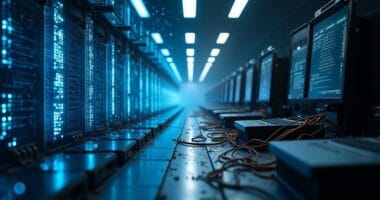Biden’s bold executive order transforms American K-12 classrooms into AI training grounds. The plan launches a Presidential AI Challenge, revamps teacher training, and forms tech partnerships – all within 120 days. Students will tackle machine learning instead of spelling bees, while strict privacy laws protect their data. It’s an aggressive push to dominate global AI innovation, though success depends on how well schools actually pull off this ambitious digital makeover.

The race for America’s AI future just kicked into high gear. President Biden’s new Executive Order on AI education, signed April 23, 2025, aims to transform every K-12 classroom into an AI training ground. No pressure, kids.
The White House isn’t messing around. They’ve assembled a task force led by heavy hitters – the Director of Science and Technology Policy, Secretary of Education, Secretary of Labor, and even threw in a Special Advisor for AI & Crypto for good measure. Because apparently regular advisors just won’t cut it anymore. A key goal is to spark curiosity and creativity in youth through early exposure to artificial intelligence.
The centerpiece of this ambitious plan is the “Presidential AI Challenge,” which sounds like a reality TV show but actually aims to showcase student and educator achievements in AI. Think science fair meets Silicon Valley, minus the ping pong tables and energy drinks. Like compound interest, early exposure to AI knowledge could multiply student success exponentially.
Move over spelling bees – the Presidential AI Challenge is turning classrooms into tech incubators minus Silicon Valley’s startup swag.
Teachers aren’t getting off easy either. The Secretary of Education has been ordered to prioritize AI in teacher training programs. Because teaching fractions wasn’t challenging enough – now they’ll need to explain machine learning algorithms to third graders.
The government’s throwing everything at this initiative, including partnerships with tech companies, nonprofits, and universities to develop AI education resources. These collaborations must strictly follow student privacy laws to protect sensitive information.
They’re particularly focused on reaching underserved communities, ensuring that AI education isn’t just for kids with robotics labs in their basements.
The Labor Department’s getting in on the action too, dangling financial incentives to boost AI-related apprenticeships.
States are being nudged to use their Workforce Innovation funds for AI skill development, while the National Science Foundation is researching how to effectively use AI in education.
Because nothing says “future-ready” like a middle schooler training neural networks.
The whole operation is set to launch within 90 to 120 days of the Order. It’s an aggressive timeline for an aggressive plan. The message is clear: America’s betting big on AI education, and they’re betting on the next generation to lead the charge. Ready or not, the AI revolution is coming to a classroom near you.





